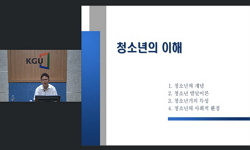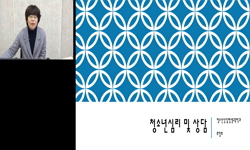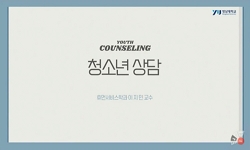This thesis is about the current problem of some students being excluded from their age group by their peers and how it became part of the teen culture. Interviews were conducted to summarize the realities of this act of excluding peers from their gro...
http://chineseinput.net/에서 pinyin(병음)방식으로 중국어를 변환할 수 있습니다.
변환된 중국어를 복사하여 사용하시면 됩니다.
- 中文 을 입력하시려면 zhongwen을 입력하시고 space를누르시면됩니다.
- 北京 을 입력하시려면 beijing을 입력하시고 space를 누르시면 됩니다.
https://www.riss.kr/link?id=T7992641
- 저자
-
발행사항
서울 : 이화여자대학교 대학원, 2000
-
학위논문사항
학위논문(석사) -- 이화여자대학교 대학원 , 사회학과 , 2000. 8
-
발행연도
2000
-
작성언어
한국어
- 주제어
-
발행국(도시)
서울
-
형태사항
iv, 80 p. : 삽도
-
일반주기명
참고문헌 : p.75-77
- 소장기관
-
0
상세조회 -
0
다운로드
부가정보
다국어 초록 (Multilingual Abstract)
The realities of this act of excluding peers were analyzed in five areas. The different treatment to the victims, how it starts, persists, and ends, and the effects or consequences were analyzed.
There are many ways of excluding a peer from a group. (The excluded peer will be called the victim from now on.) Some of the treatments toward the victim are ignoring that person, verbal abuse, violence and offensive actions, and constantly irritating that person. The cause of exclusion from their peer groups vary. However, two major reasons are that victims violate the rules of the group that is followed by all others, and that the victim has an unique character or personality. Financial status of the family, appearance, and a certain mistake made by the victim might be reasons for exclusion. This tells us that there is conflict among the members of the peer groups and this is shown through the at of exclusion. The negative treatments to the victim does not end but worsens as time passes because of the victim's resistance to the group and their treatment and when a third party like the authorities of parents get involved.
This exclusion among peers effects the individual victim as well as th classroom atmosphere. The victims most of the time refuse to attend school or want to transfer to another school. They will lose self-esteem and self-confidence and grades at school might significantly drop or rise. In more serious cases, they have to receive psychiatric help or commit suicide. While victims lose self-worth, the offenders and those who side with the offenders do not stop the act even though they know it is wrong. The rest of the group side with the offenders because they are afraid to become victims.
It was previously mentioned that there exists a power conflict among the members of the teen peer groups and excluding the victim is a way of expressing that conflict. This study revealed that there is a certain organization of peer groups in school and the classrooms, the power conflict influenced the exclusion, and that break up among classmates is usually related to the peer group and the exclusions.
Teen peer groups and their process of formation is in many ways different from adult social groups. However, they are similar in that power struggle is evident and that superiority and inferiority are determined by the result of this power struggle. The "jjang" is the one with the power in the teen peer groups. Before the "jjang" was determined by good grades in school; however, it has shifted to factors like leadership and one's abilities in sports and computer. Most of the time, the person who has the best abilities win in the power struggle among their peers and become the "jjang" of the peer group. Other support that leader. The leader through excluding any individual he/she dislikes and making others dislike that individual too is expressing his/her superiority and strength, and also maintains and strengthens the power one has.
As a result, the current problem of exclusion from peer group is a form of an individual or a group with more power psychologically and physically oppressing the one with less power repetitively. The point is that repetitive oppression comes from the imbalance of power. This is a systematic abuse of power and control in teen peer group in schools and classrooms.
Through the case studies, we have found that many teenagers and greatly suffer from this exclusion among peers. Further studies should focus on the detailed account of the structure of the same-age peer groups and the power conflicts inside those groups instead of determining the number of victims and finding out who the victims and the offenders are.
This thesis is about the current problem of some students being excluded from their age group by their peers and how it became part of the teen culture. Interviews were conducted to summarize the realities of this act of excluding peers from their group and to view the organization and culture of the teen peer groups.
The realities of this act of excluding peers were analyzed in five areas. The different treatment to the victims, how it starts, persists, and ends, and the effects or consequences were analyzed.
There are many ways of excluding a peer from a group. (The excluded peer will be called the victim from now on.) Some of the treatments toward the victim are ignoring that person, verbal abuse, violence and offensive actions, and constantly irritating that person. The cause of exclusion from their peer groups vary. However, two major reasons are that victims violate the rules of the group that is followed by all others, and that the victim has an unique character or personality. Financial status of the family, appearance, and a certain mistake made by the victim might be reasons for exclusion. This tells us that there is conflict among the members of the peer groups and this is shown through the at of exclusion. The negative treatments to the victim does not end but worsens as time passes because of the victim's resistance to the group and their treatment and when a third party like the authorities of parents get involved.
This exclusion among peers effects the individual victim as well as th classroom atmosphere. The victims most of the time refuse to attend school or want to transfer to another school. They will lose self-esteem and self-confidence and grades at school might significantly drop or rise. In more serious cases, they have to receive psychiatric help or commit suicide. While victims lose self-worth, the offenders and those who side with the offenders do not stop the act even though they know it is wrong. The rest of the group side with the offenders because they are afraid to become victims.
It was previously mentioned that there exists a power conflict among the members of the teen peer groups and excluding the victim is a way of expressing that conflict. This study revealed that there is a certain organization of peer groups in school and the classrooms, the power conflict influenced the exclusion, and that break up among classmates is usually related to the peer group and the exclusions.
Teen peer groups and their process of formation is in many ways different from adult social groups. However, they are similar in that power struggle is evident and that superiority and inferiority are determined by the result of this power struggle. The "jjang" is the one with the power in the teen peer groups. Before the "jjang" was determined by good grades in school; however, it has shifted to factors like leadership and one's abilities in sports and computer. Most of the time, the person who has the best abilities win in the power struggle among their peers and become the "jjang" of the peer group. Other support that leader. The leader through excluding any individual he/she dislikes and making others dislike that individual too is expressing his/her superiority and strength, and also maintains and strengthens the power one has.
As a result, the current problem of exclusion from peer group is a form of an individual or a group with more power psychologically and physically oppressing the one with less power repetitively. The point is that repetitive oppression comes from the imbalance of power. This is a systematic abuse of power and control in teen peer group in schools and classrooms.
Through the case studies, we have found that many teenagers and greatly suffer from this exclusion among peers. Further studies should focus on the detailed account of the structure of the same-age peer groups and the power conflicts inside those groups instead of determining the number of victims and finding out who the victims and the offenders are.
국문 초록 (Abstract)
먼저 면접 대상자들을 통해 현상적인 분석을 실시하였는데 집단따돌림이 나타나는 유형으로는 어떠한 것들이 있는지 집단따돌림은 어떠한 계기로 발단이 되고 진행이 되는지 어떤 방법을 통해서 종료가 되는지, 마지막으로는 집단따돌림이 미치는 효과를 알아보았다.
집단따돌림 유형으로는 또래집단으로부터 소외시키기, 언어적으로 괴롭힘, 고의적 행동 또는 폭력 사용, 장난치기로 괴롭힘 등 네 가지 방법으로 나타났는데 결국은 여러 가지 방법을 통해 피해자를 또래집단으로부터 소외시키는 것을 의미한다. 집단따돌림의 발단이 되는 계기는 또래집단 내부 규칙의 위반, 피해자의 개인적 특성으로 볼 수 있는 집안형편이나 외모, 피해자의 특수한 실수로 집단따돌림이 시작된다는 것을 알 수 있다. 결국 집단따돌림은 또래집단 내의 구성원들 간의 갈등의 표출이라고 보여진다. 집단따돌림이 진행되면서 가해행위의 강도가 심해지는데 그러한 원인은 피해자의 저항여부와 제 3자의 개입이라고 볼 수 있다.
마지막으로 집단따돌림이 미치는 효과는 크게 피해자 개인과 교실 안에 영향을 주었다. 피해자 개인에게는 학교 생활 자체를 거부하는 경향과 학교나 집에서 위축된 모습을 보였다. 뿐만 아니라 전학이나 학교를 그만두고 싶어하고 성적에 있어서도 급격한 하락과 상승을 보였다. 또한 심한 경우에는 정신과 치료를 받은 경우도 있었고 자살을 생각할 정도로 집단따돌림의 후유증은 심각한 것으로 나타났다. 이와 같이 피해자들이 심한 피해의식을 갖고 있는데 반해 가해자들과 동조자들은 자신들의 행동이 잘못되었다는 것을 알고 있었지만 생각과는 달리 집단따돌림의 행동을 그만두지는 않았다 .특히 동조자들은 피해자를 도와주었다가는 자신도 따돌림을 당할까 두려워 묵인을 하는 것이다. 사례들을 분석하는데 있어 집단따돌림과 또래집단 내 권력과의 관계가 있다고 보고 학교와 교실의 또래집단 구조는 어떻게 형성이 되는지, 또래집단의 권력구조는 집단따돌림에 어떠한 영향을 주는지, 교실붕괴라는 현상은 실제로 어떻게 일어나며 그러한 현상은 과연 또래집단과 집단따돌림이라는 현상과 어떠한 관계가 있는지를 살펴보았다.
청소년들의 또래집단 형성과정에도 기준은 다를지라도 성인의 사회집단에서와 마찬가지로 힘의 관계가 작용한다는 사실을 알 수 있었고 결국은 그들 나름대로의 힘의 우열이 결정된다. 이러한 힘을 가지고 있는 ‘짱’은 예전과는 달리 성적보다는 리더십이나 운동, 컴퓨터 등을 잘하는 학생으로 힘의 측정기준 자체가 달라졌다. 대개 힘의 관계에서 우위에 있는 구성원이 주동자가 되는 경우가 많았고 다른 성원들은 방조하는 형태를 띠고 있다. 집단따돌림을 시키는 주동자는 구성원들에게 집단따돌림이라는 행동을 하면서 자신의 우월성을 과시하려는 욕구를 가지고 있으며 이미 확보된 권력을 유지․강화하고자 한다.
결국 집단따돌림이라는 현상은 학원 폭력의 범주에서 독립된 개념으로 많은 힘을 가진 개인 혹은 집단이 보다 적은 힘을 가진 개인을 심리적 혹은 신체적으로 반복하면서 억압하는 것이다. 여기에서 중점을 두어야 할 것은 ‘힘의 불균형’상태에서 ‘반복적인 억압’이 지속적으로 나타난다는 것이다. 그것은 어떻게 보면 학교와 교실이라는 한 공간을 함께 사용하고 있는 청소년 또래집단 사이에서 나타나는 체계적인 힘과 권력의 남용이라고 할 수 있다.
사례연구를 통해 아직도 많은 청소년들이 집단따돌림으로 인해 많은 고통을 당하고 있다는 사실을 알 수 있었다. 하지만 이제는 단순히 피해율을 조사하고 가해학생과 피해학생의 특성을 살펴보는 것보다는 청소년들이 대부분의 시간을 보내고 있는 교실 안 더 나아가서 청소년들 사이에서 만들어지는 또래집단간의 구조와 권력관계에 관한 더욱더 많은 세부적인 조사가 필요하다고 본다.
본 논문은 학교에서의 집단따돌림 현상이 청소년들의 또래집단 문화와 밀접한 관련이 있고, 또래집단 내의 힘과 권력의 관계로 해석될 수 있다는 관점에서 사례면접을 통해 집단따돌림의 ...
본 논문은 학교에서의 집단따돌림 현상이 청소년들의 또래집단 문화와 밀접한 관련이 있고, 또래집단 내의 힘과 권력의 관계로 해석될 수 있다는 관점에서 사례면접을 통해 집단따돌림의 실태와 또래집단의 구조 및 문화를 검토해 보았다.
먼저 면접 대상자들을 통해 현상적인 분석을 실시하였는데 집단따돌림이 나타나는 유형으로는 어떠한 것들이 있는지 집단따돌림은 어떠한 계기로 발단이 되고 진행이 되는지 어떤 방법을 통해서 종료가 되는지, 마지막으로는 집단따돌림이 미치는 효과를 알아보았다.
집단따돌림 유형으로는 또래집단으로부터 소외시키기, 언어적으로 괴롭힘, 고의적 행동 또는 폭력 사용, 장난치기로 괴롭힘 등 네 가지 방법으로 나타났는데 결국은 여러 가지 방법을 통해 피해자를 또래집단으로부터 소외시키는 것을 의미한다. 집단따돌림의 발단이 되는 계기는 또래집단 내부 규칙의 위반, 피해자의 개인적 특성으로 볼 수 있는 집안형편이나 외모, 피해자의 특수한 실수로 집단따돌림이 시작된다는 것을 알 수 있다. 결국 집단따돌림은 또래집단 내의 구성원들 간의 갈등의 표출이라고 보여진다. 집단따돌림이 진행되면서 가해행위의 강도가 심해지는데 그러한 원인은 피해자의 저항여부와 제 3자의 개입이라고 볼 수 있다.
마지막으로 집단따돌림이 미치는 효과는 크게 피해자 개인과 교실 안에 영향을 주었다. 피해자 개인에게는 학교 생활 자체를 거부하는 경향과 학교나 집에서 위축된 모습을 보였다. 뿐만 아니라 전학이나 학교를 그만두고 싶어하고 성적에 있어서도 급격한 하락과 상승을 보였다. 또한 심한 경우에는 정신과 치료를 받은 경우도 있었고 자살을 생각할 정도로 집단따돌림의 후유증은 심각한 것으로 나타났다. 이와 같이 피해자들이 심한 피해의식을 갖고 있는데 반해 가해자들과 동조자들은 자신들의 행동이 잘못되었다는 것을 알고 있었지만 생각과는 달리 집단따돌림의 행동을 그만두지는 않았다 .특히 동조자들은 피해자를 도와주었다가는 자신도 따돌림을 당할까 두려워 묵인을 하는 것이다. 사례들을 분석하는데 있어 집단따돌림과 또래집단 내 권력과의 관계가 있다고 보고 학교와 교실의 또래집단 구조는 어떻게 형성이 되는지, 또래집단의 권력구조는 집단따돌림에 어떠한 영향을 주는지, 교실붕괴라는 현상은 실제로 어떻게 일어나며 그러한 현상은 과연 또래집단과 집단따돌림이라는 현상과 어떠한 관계가 있는지를 살펴보았다.
청소년들의 또래집단 형성과정에도 기준은 다를지라도 성인의 사회집단에서와 마찬가지로 힘의 관계가 작용한다는 사실을 알 수 있었고 결국은 그들 나름대로의 힘의 우열이 결정된다. 이러한 힘을 가지고 있는 ‘짱’은 예전과는 달리 성적보다는 리더십이나 운동, 컴퓨터 등을 잘하는 학생으로 힘의 측정기준 자체가 달라졌다. 대개 힘의 관계에서 우위에 있는 구성원이 주동자가 되는 경우가 많았고 다른 성원들은 방조하는 형태를 띠고 있다. 집단따돌림을 시키는 주동자는 구성원들에게 집단따돌림이라는 행동을 하면서 자신의 우월성을 과시하려는 욕구를 가지고 있으며 이미 확보된 권력을 유지․강화하고자 한다.
결국 집단따돌림이라는 현상은 학원 폭력의 범주에서 독립된 개념으로 많은 힘을 가진 개인 혹은 집단이 보다 적은 힘을 가진 개인을 심리적 혹은 신체적으로 반복하면서 억압하는 것이다. 여기에서 중점을 두어야 할 것은 ‘힘의 불균형’상태에서 ‘반복적인 억압’이 지속적으로 나타난다는 것이다. 그것은 어떻게 보면 학교와 교실이라는 한 공간을 함께 사용하고 있는 청소년 또래집단 사이에서 나타나는 체계적인 힘과 권력의 남용이라고 할 수 있다.
사례연구를 통해 아직도 많은 청소년들이 집단따돌림으로 인해 많은 고통을 당하고 있다는 사실을 알 수 있었다. 하지만 이제는 단순히 피해율을 조사하고 가해학생과 피해학생의 특성을 살펴보는 것보다는 청소년들이 대부분의 시간을 보내고 있는 교실 안 더 나아가서 청소년들 사이에서 만들어지는 또래집단간의 구조와 권력관계에 관한 더욱더 많은 세부적인 조사가 필요하다고 본다.
목차 (Table of Contents)
- I. 연구문제와 방법 1
- A. 문제 제기 및 연구목적 1
- B. 연구방법 4
- II. 이론적 자원의 검토 6
- A. 개념정의 6
- I. 연구문제와 방법 1
- A. 문제 제기 및 연구목적 1
- B. 연구방법 4
- II. 이론적 자원의 검토 6
- A. 개념정의 6
- B. 이론적 자원 7
- III. 선행연구 고찰 14
- A. 선행연구 방법 및 대상의 특성 14
- B. 집단따돌림의 실태 16
- 1. 집단따돌림의 발생빈도 16
- 2. 집단따돌림 행위의 유형 20
- 3. 집단따돌림의 원인 22
- 4. 집단따돌림의 영향 24
- C. 의의와 시사점 25
- IV. 사례연구 27
- A. 면접 대상자의 일반적 특성 27
- B. 집단따돌림의 현상적 분석 29
- 1. 집단따돌림의 행위유형 29
- 2. 집단따돌림의 발단 36
- 3. 집단따돌림의 전개과정 42
- 4. 집단따돌림의 종료 47
- 5. 집단따돌림의 영향 54
- C. 권력현상으로서의 집단따돌림 59
- 1. 학교와 교실의 또래집단 구조 60
- 2. 또래집단의 권력구조와 집단따돌림 64
- 3. 교실붕괴와 또래집단, 집단따돌림 66
- V. 요약 및 결론 71
- 참고문헌 75
- Abstract 78












